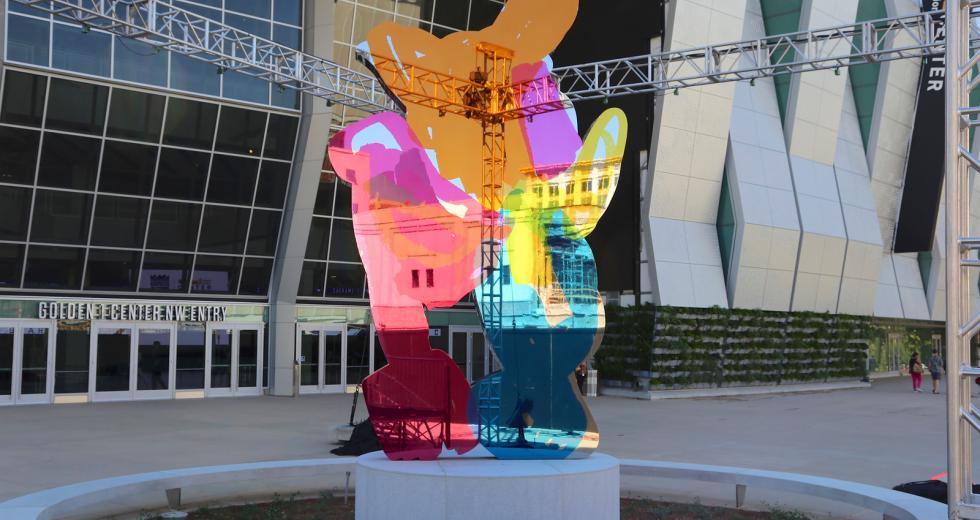Can Sacramento continue to invest in the arts when public budgets remain tight and the economy continues to underperform? Wrong question. Rather, we need to ask ourselves whether we can afford not to invest in the arts. We need to change the debate away from a competition for dollars and toward building an understanding of the many avenues by which a vibrant arts scene complements and promotes robust economic growth in our region.
Sacramento faces numerous economic challenges and remains fettered with its reputation as a cow town. This fact is vividly displayed by Sacramento’s low prominence on the web. Online searches for Sacramento occur less than half as often as Seattle, Austin or Denver. Our tourism economy underperforms the national average in terms of leisure and hospitality employment by a full 7,000 jobs. This fact is disconcerting given Sacramento’s proximity to gold country, Napa, Tahoe and many other regional attractions.
Related: What happened to TBD Fest — and what happens next?
On another front, Sacramento is in pitched battle with other major western markets to attract the next wave of innovative industries. Firms want to locate near large pools of young, talented workers. And yet my organization, the Greater Sacramento Economic Council, has found that the city’s reputation hampers its ability to attract the next generation of these highly-educated workers.
Cities are discovering that arts and music experiences are key to attraction out-of-town visitors and workforce talent – that in turn creates more leisure and hospitality jobs and boosts the prospect of luring innovative firms seeking talented workers.
Savvy investments in the arts can help the region address these woes. Imagine one day walking down K Street regaled by buskers and dropping into art studios lining the street. You stop at the Golden 1 Center to enjoy Jeff Koons’ $8 million sculpture, “Coloring Book,” in the public plaza. You continue through an innovative art installation through the tunnel that connects to Old Sacramento and the waterfront. There, further imagine a tangle of pathways and art installations that redefine the city’s relationship to the Sacramento River while you hear jangled chords wafting across the water from a music festival on the West Sacramento riverfront. Cities are discovering that arts and music experiences are key to attracting out-of-town visitors and workforce talent — that in turn creates more leisure and hospitality jobs and boosts the prospect of luring innovative firms seeking talented workers.
This is not pie-in-the-sky dreaming, but a proven economic development strategy backed by a multitude of successful case studies. Look at San Antonio: The city converted a flood-control project into a charming stretch of shops and restaurants bordering the river. The pathway offers art, food, music and bucolic boat rides. Recently, they have expanded the riverwalk to connect visitors to two museums and a zoo. This rich set of experiences attracts 9.3 million out-of-towners a year and injects an estimated $3 billion into the economy. And look at Miami: The city joined forces with Art Basel — a successful international art show featuring contemporary art in galleries and outdoor exhibits, and which attracts 70,000 annual attendees who spend at least $13 million at the three-day show. Look at Grand Rapids, Michigan and Columbus, Ohio: They join a slew of mid-market cities that are drawing thousands to their cities with music events.
Sacramento, moreover, already has great bones onto which it can develop an art- and music-based visitation platform. With the Aftershock Festival, First Fest, Sacramento Music Festival (formerly the Jazz Jubilee) and the now-defunct TBD Fest, Sacramento has already shown that homegrown music festivals catering to the full range of musical tastes can successfully draw tens of thousands of people to the area. The only remaining question is whether one of these festivals or a new concept offers the best prospects for busting into the big leagues.
Additionally, the Koons’ sculpture in Golden 1 Center’s plaza already anchors a revived K Street corridor that connects Midtown galleries and restaurants all the way to the waterfront. Such promenades have been the core of great cities; think of Las Ramblas in Barcelona, 5th Avenue in New York City or the Champs-Élysées in Paris. Infusing this promenade with art and music will transform the vibe of downtown Sacramento and vault the successful Second Saturday gallery events to a whole new level. The R Street Corridor is coming alive, and the Crocker Art Museum is cementing these elements together with a major revamp of Crocker Park designed to create a robust, art-centered vibrant civic amenity that connects downtown to the waterfront.
If we build this vision of Sacramento, will people come? The growing success of art and music festivals throughout the U.S provides strong reasons to be optimistic. On top of that, ponder these numbers: Each year, 5.3 million people pass through Sacramento traveling between the Bay Area and Lake Tahoe. Thirty percent of them stop on the way and half express interest in trying out something new. Napa hosted 3.5 million visitors in 2016. Of those who fly to Napa less than 10 percent use the Sacramento Airport. Capturing even a small portion of these tourist markets would have a profound effect on the region’s economy and would complement the public investments made in the Golden 1 Center, the convention center and downtown revitalization.
Mayor Darrell Steinberg’s Destination Sacramento fund, which he recently carved out by limiting the scope of the Convention Center remodel, provides a critical down payment for an arts-based visitation strategy. Sacramento only needs to add imagination and creative energy to make it happen.
The arts. They are good for our soul, good for our civic fabric and, most importantly, they are good for our economy.



